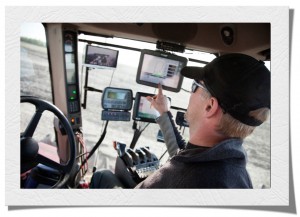Fall Tillage on your Land: Pros and Cons
Just as the old adage, “A woman’s work is never done,” rings true, so too could one say this about farmers. With Nebraska farmers at or approaching the midway point of the 2013 harvest, most have already thought ahead to the ways they will manage their fields after the crops are out and before winter sets in. There is a wide array of tilling practices across the state, and even among smaller geographical areas. It seems that tilling practices are as individual as farmers themselves, and many factors influence where a farmer will be on the tilling/no-tilling spectrum.
There are two main factors all producers take into account when it comes to tillage decisions. One is soil type, and the other is soil moisture. As such, fall tillage practices vary from operation to operation, and even within operations, since one must consider the soil characteristics of each individual piece of ground. Weather conditions also have a considerable effect on how producers deal with fall tillage of their land.

Many farmers think that fall tillage is better than spring tillage, since the soil moisture profile is usually more suitable. Generally, less moisture in the ground during fall tillage leads to less soil compaction, more efficient soil fracturing, less smearing of soil, and less large soil clods, resulting in better soil quality and yields. Experts stress that staying off of wet soils has a tremendous effect on soil structure, as very wet soils compact very easily, in turn affecting yields down the line.
There are many different ways farmers till as well, and these practices also depend upon the type of ground with which they are dealing. There are certain advantages and disadvantages associated with these various forms of tilling, including their effects on soil erosion, moisture loss, fuel and labor costs, soil structure and temperature, compaction, and dependence on herbicides. This chart illustrates the major advantages and disadvantages associated with the major tilling systems: http://cropwatch.unl.edu/web/tillage/advdisadv.
Many farmers also have livestock to consider, and tilling before putting out livestock to graze the stubble is, of course, not an option. More and more farmers are relying on cover crops to supplement their livestock during the fall and winter months, as well as to control soil profiles, add nitrogen, control erosion, and prevent runoff. Many producers find that not only do cover crops provide excellent forage for their cattle, but they also help soil to retain nutrients and moisture in the long run. Of course, large-scale grazing of cattle can lead to soil compaction, so farmers must take into consideration both the pros and cons of putting their livestock out on various fields.
Farmers and livestock producers are continually making decisions about what is best for their operations, and realize that just because the crops are out does not mean that work stops until spring planting.
To learn more about how land tillage practices affect the long-term value of your farm, set up a free consultation with one of our experienced farm mangers.

